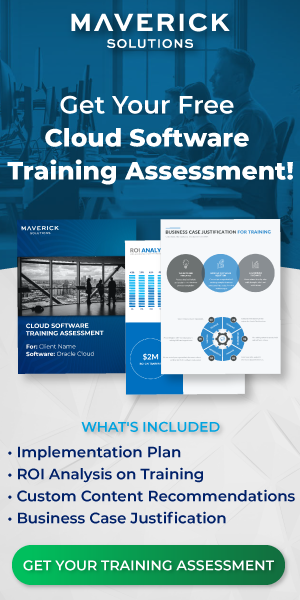Author: Gabby Paspa
Procurement contracts are used to come to an agreement about products and/or services. These contracts are vital for ensuring that all individuals are on the same page and legally obliged to the terms and conditions. This post will go over the different types of contracts, the key features of the contract, and more importantly how these contracts can be utilized to their full potential.
Types of Procurement contracts
Procurement contracts can be categorized into different types. Being familiar with these types can ensure that you are using the correct procurement contract for the correct buying situation. The types of contracts may also need to be combined to be customized for certain situations that need aspects of more than one contract type.
The fixed-price contract
This type of contract has the seller agree to provide their service or product at a set price, regardless of price fluctuations in materials, equipment, or labor costs. As with most things, this type of contract has its pros and cons.
Pros:
- Buyers know the cost of the project from the beginning.
- Low risk for the buyer
- Allows for best budgeting practices
- If the market or cost of goods increases you are not affected.
Cons:
- High risk for the seller
- The seller may “pad” the price or make it higher to ensure they cover potential price increases and risks.
- If the buyer makes any changes to the scope of work or timeline, it can mean additional charges from the seller.
- Sellers may find ways to cut corners to ensure that they do not lose money on a sale. Meaning the buyer could be risking quality.
- If the market or cost of goods decreases you still must pay the proposed amount.
The Cost-plus contract
This contract type has the buyer pay for the cost of the work in addition to a fixed percentage that the seller charges for providing the goods and services. The seller charges the buyer for the actual cost of any of the materials, equipment, overhead, and labor. To increase their profit, they will add on an additional fee based on the agreed-upon amount in the contract. These contracts will often also include a maximum amount sellers can spend. For the seller to spend more they must gain approval from the buyer.
Pros:
- The buyer is only paying for what they get.
- The materials are often of higher quality since there is an incentive for the contractors to use the best materials and labor.
- Often more cost-effective than the fixed-price contracts
- More projects with not fully defined designs or plans can be taken on with less risk.
Cons:
- Since there is no fixed amount, the costs may fluctuate heavily throughout the entirety of the project.
- Buyers do not know the full cost of the project and may end up paying much more than expected.
- Less incentive for the contractor or seller to be efficient since they profit regardless.
- The materials used as well as the effort can be difficult to track and monitor.
The Time and Materials contract
The time and materials contract has the seller charge for the cost of any materials they end up using plus an hourly or daily wage. All rates, including any markup charges on materials and wages, are included in the terms of the contract. This type of contract is great for buyers who are uncertain of what they want or need when they begin their project. It is also beneficial to sellers who are unsure of what the project will need in terms of labor and materials.
Pros:
- Allows for a lot of flexibility within the project.
- The negotiation process of creating this contract is much simpler than the other contract types.
- The seller/contractor cannot take advantage of time and work slower to gain more money.
Cons:
- The process of tracking materials and billable hours is cumbersome and tedious.
- Since there is no fixed budget, costs can end up being quite high.
The Procurement Contracts process
Though there may be various types of contracts they all share similar phases that ensure the contract is fair and covers all the needed bases. These various phases are listed below in chronological order.
Establish Contract Standards: Making standards is important for consistency across your projects as well as ensuring fewer contractual risks.
Author Contracts: This involves leveraging standard clauses, templates, and business rules to define the contract’s obligations for both parties. You also set up and monitor tasks that enable the obligations to be successfully completed.
Negotiation Phases: This phase is where the suppliers review the contract and come back with any suggested changes to the contractual terms. Then both parties can come to an argument and submit the contract. It is important that all interactions and negotiations are documented in case of any future disputes.
Approve and Sign Phase: This phase is where you specify and communicate the terms and guidelines to those that it needs to be directed to. After these individuals have reviewed these terms, they will receive authorization to sign the contract.
Execute and Monitor Phase: This phase involves the execution of the contracts and monitoring to ensure that the contractual obligations, as written, are fulfilled. It is important to collect data to help enforce the contract’s terms and provide proof of any misconduct.
Administer Changes Phase: If the contract needs to be changed after signing this phase of a contract process will be implemented. You must define a formal contract change request process for your organization and the supplier community. Amendments to contract terms are routed to designated individuals for approval. Be sure to keep track of any changes for audit purposes.
Renegotiate and Close Out Phase: After all contractual obligations of a contract have been fulfilled or a contract has expired you have reached the final phase of a contract process. You can now decide to close out the contract permanently or reuse/renegotiate the contract to be used for a future project.
5 best ways to use procurement contracts productively
Now how do we take all that information and use it to ensure that projects are as productive and efficient as possible? Here are five ways you can use this information to ensure a successful procurement transaction.
1: Better optimize vendor management practices.
A procurement contract allows you to have a standardized and more streamlined approach to the vendor process. If you have fair contracts that you follow and vendors know this, it allows for a better relationship and with those better relationships, you can manage your vendors better and ultimately your projects.
2: Eliminates the need for the manual processing of creating negotiation and purchase orders.
Using a cloud-based or database software, such as Oracle, eliminates the risk of human error. Not only does it get rid of human error, but it also eliminates the need to manually process negotiation and purchase orders. These softwares allow for the creation and addition of orders to be automatically added to contracts as needed. This helps both sides to have better trust in the strength of the contract and the accuracy.
3: Start multiple processes at once.
With a solid procurement contract, you can have multiple projects happening at once since the costs are known. Depending on the contract type, you will understand the price something may take so you can accept and start other projects. Even if one contract type may be more expensive than the other, if you know the definite price of one project, from one contract you can use that information to budget for the future.
4: Cut supply management costs.
A contract helps cut costs since both sides of the contract agree to an amount. This amount is less than if the goods and services were to be paid for in full. The contract allows for both sides to benefit and lowers the cost and risk of overpriced goods.
5: Enhance project performance visibility.
A contract helps to create a plan for the entirety of a project. Using a contract to have plans for obstacles that may be faced during the lifecycle of a project helps ensure that no feuds occur, and no money is unnecessarily lost. The contract gives transparency to the goods and services and the expectations of the involved parties.
More questions?
Still have questions? You can learn more about how to use Procurement contracts productively with ENGAGE Learn. ENGAGE Learn is Maverick Solutions’ subscription-based training content for enterprise software. It’s fully customizable, comprehensive, and available 24/7/365. If you want to know how Maverick Solutions can fit into your organization’s current or future software implementation projects, speak with one of our training experts today!
This article was written for Oracle release 21C. Due to the nature of Cloud software and updates, this article may no longer be accurate. If you would like access to the most up-to-date version, please reach out to our team to learn more.





